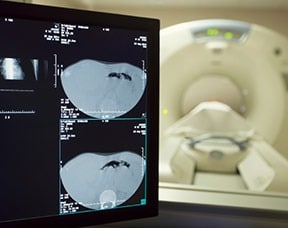New research into medical imaging has found that using both ultrasound and MRI together increases the ability to detect and identify prostate cancer during follow-up biopsy.
Keeping a Better Eye on Things
It’s important to screen for prostate cancer as you get older, and in many cases that means a trans-rectal ultrasound (TRUS). If the ultrasound detects something suspicious, this is usually followed by a biopsy; the problem, though, is that TRUS can be sometimes ineffective as a method for spotting possible tumors, resulting in false negatives or undergrading the seriousness of a prostate cancer diagnosis.
Scientists from New York University Langone Health, concerned with finding a better way to keep an eye on things, may have found just that. In a recent clinical study published by university researchers in the journal BJU International, it seems that one possible way to increase the effectiveness of TRUS examinations is to also incorporate highly targeted MRI scans to provide a secondary layer of prostate cancer detection.
Not as Obvious as It Seems
Increased attention paid to imaging would seem to be a no-brainer when it comes to increased detection of prostate cancer, but that’s not necessarily the case when it comes to prostate cancer detection. The truth is, though, that not just routine MRI exams are the ones that work so well in conjunction with ultrasound imaging; instead, the study found that the most benefit came in instances where an MRI was highly targeted.
Additionally, the ultrasound-MRI one-two punch was found to be particularly effective in identifying prostate cancers with Gleason score numbers of 7 or higher. With this scale being an excellent one for identifying the overall seriousness of prostate cancers after biopsy — and with higher numbers being more severe — any tool or technique for identifying high-scoring prostate cancers is a welcome and valuable one.
Worth the Trouble
This means, of course, that men submitting to a highly-targeted MRI in the wake of an ultrasound is almost universally a good idea. Even if the ultrasound doesn’t find anything — in fact, especially when the ultrasound turns up little evidence — an MRI can act as a failsafe to catch prostate cancer that might otherwise go undiscovered.
Treating prostate cancer is all about early detection and screening. Combining ultrasound with targeted MRI scans could end up saving your life or the life of a loved one!


